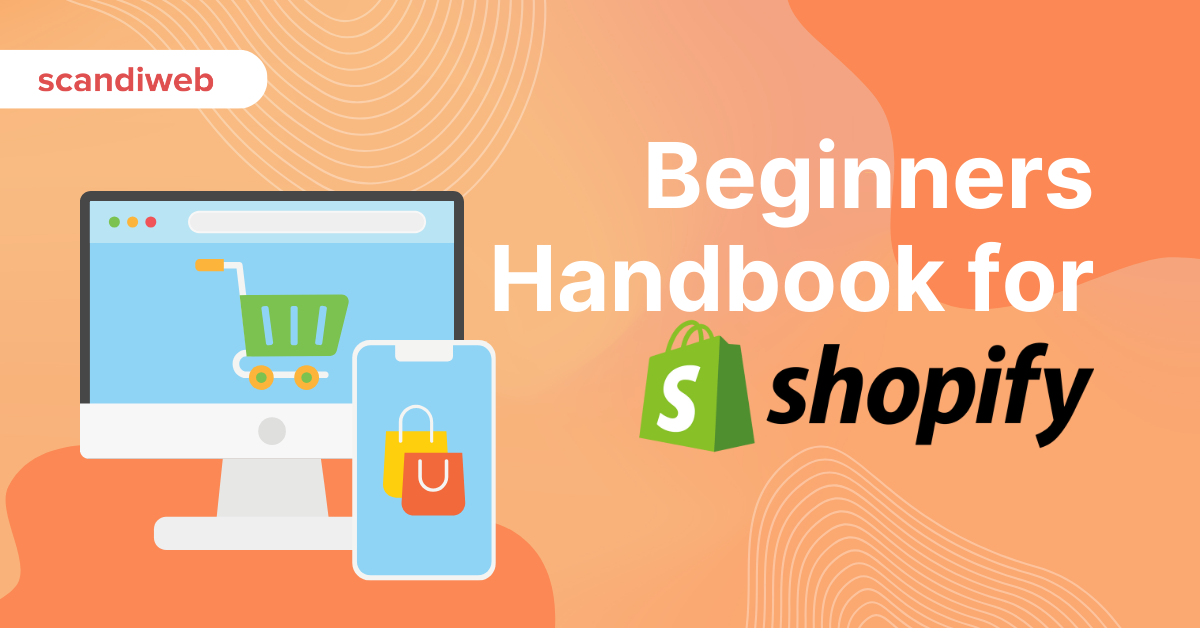Have you decided to establish your online business with Shopify? But how to open a Shopify store? This guide is designed to lead you through the essential steps of Shopify store setup, leaving no room for uncertainty. Learn to establish your brand, showcase your products, and ensure your store’s functionality with the ease of a seasoned professional.
Key takeaways
- Establish a strong foundation for your Shopify store by choosing a unique, brand-reflective store name and securing a matching domain to improve credibility and recognition.
- Use the Shopify admin dashboard effectively to manage your store, select the ideal theme for a compelling customer experience, and present products professionally with good imagery, descriptions, and SEO.
- Before launch, ensure a seamless shipping and payment process, perfect the checkout experience, and get your store ready for successful marketing with an email list, social media interaction, and paid advertising.
Laying the foundation for your Shopify store

Starting on the Shopify journey for your online store? That’s fantastic! Shopify shines as an intuitive platform among its competitors such as WooCommerce, Magento, and other great eCommerce platforms.
Shopify store setup is similar to building a house. What’s the first thing you need? A strong foundation! In eCommerce, your foundation includes a unique and memorable store name and a custom domain. These core elements reflect your brand’s identity and help your store stand out in the bustling online market. They are the stepping stones that lead to the establishment of a credible online presence.
A unique store name is vital for effective branding. It enhances recognition and customer recall, laying the groundwork for a lasting relationship with your customers. It’s equally significant to secure a domain name that matches your store name. It not only adds a professional touch to your eCommerce website but also aids in establishing your brand’s credibility.
Check out some case studies of brands that are using Shopify:
Crafting store’s identity
Your Shopify store name goes beyond being just a label. It serves as an initial contact point with potential customers and is critical to your brand’s identity. It’s your first chance to make an impression, so why not make it count?
Choosing a store name that shows the essence and values of your brand strengthens a consistent and impactful brand image. A name that authentically represents your niche and product offerings contributes to carving out a unique brand identity. It helps your store stand out from competitors, paving the way for a memorable and distinctive online presence.
Securing custom domain
A custom domain name serves more than just a web address. It’s your online business card, a reflection of your brand that enhances recognition and trust. It’s crucial for your Shopify store’s professional impression and a key player in your online campaigns.
Securing a domain name that aligns with your Shopify store and social media handles enhances credibility and consistency across all online platforms. This simple step can improve your store’s SEO and lead to higher search rankings. The best part is setting up a domain with Shopify is as easy as pie! You can purchase one directly from Shopify or use one obtained elsewhere.
Getting to know the Shopify admin dashboard

Consider the Shopify admin dashboard as the control center of your online store. It’s where you manage all aspects of your store, including orders, products, and customers. It’s a one-stop shop for everything you need to operate and grow your eCommerce business.
The dashboard features:
- A sidebar that provides access to core business aspects, analytics, marketing, promotions, discounts, and settings for the store and account
- A search bar that enables you to locate apps or sales channels quickly and suggests recommendations for new ones to install
- An alert feed that notifies you of important updates or required actions, ensuring that no critical issue is overlooked.
Mastering sales channels
Sales channels are platforms where you can sell your products. Shopify offers a variety of sales channels such as the online store, Shopify POS for in-person sales, and various social media platforms like Facebook, Instagram, Pinterest, and TikTok. Diversifying is a smart move to extend your store’s reach and increase sales, especially when you want to sell online.
It’s simple to add a sales channel to your Shopify store setup. Here’s how:
- Go to Settings > Apps and Sales Channels.
- Select ‘Visit Shopify App Store’ to find and add your desired channel.
- Each sales channel within Shopify has its own dashboard where you can monitor sales and traffic metrics.
- Shopify also provides recommended sales channels to help extend your store’s reach.
Managing inventory like a pro
Managing inventory is a significant component of operating a successful eCommerce business. It’s like the heartbeat of your Shopify store – keeping track of what’s in stock, what needs to be reordered, and what’s flying off the virtual shelves.
Shopify’s Inventory area is a lifesaver for managing inventory. It enables inventory tracking, displays current inventory levels, and allows adjustment of stock quantities. By setting up store locations in Shopify, you can manage where inventory is stored, fulfill orders, and sell products more efficiently.
Selecting the perfect Shopify theme

The theme of your Shopify store significantly impacts your online store’s success. It’s like the digital storefront, setting the stage for your customer’s shopping experience. The Shopify Theme Store offers a diverse selection of themes, including both free and premium options, catering to a wide range of aesthetic and functional preferences.
Selecting the right theme is a critical step in your Shopify store setup. It should not only be visually appealing but also complement your products and brand identity. The beauty of Shopify themes is that they are flexible and can be used across varying industries, making them a perfect fit for any business.
Importance of theme selection
Choosing the right theme goes beyond selecting an attractive layout. It’s about creating a virtual environment that resonates with your potential customers and encourages them to make a purchase. A well-chosen theme can be the foundation of a successful business idea.
Shopify offers over 100 quality themes, each with convenient built-in features like localization options and product recommendations. These themes are designed to captivate your customer’s attention within a time of eight seconds – the surprisingly brief adult attention span. And with Shopify’s Theme Store offering curated collections and industry-specific categories, finding the ideal theme for your store is a breeze.
Customization for brand consistency
Selecting a theme is merely the beginning. To truly make it your own, customization is key. Your Shopify store should reflect your brand’s visual identity. From the logo and typefaces to the colors, every aspect of your online store should echo your unique brand image.
Shopify’s theme editor allows you to preview changes and adjust theme settings to fit your brand’s unique style. For those with HTML, CSS, and Liquid knowledge, more advanced customizations can be made directly in the theme code. SEO-optimized product pages further enhance brand consistency with descriptive headings, title tags, meta descriptions, and quality images with descriptive alt text.
Product presentation

Think of your products as the stars of your Shopify store that deserve to be highlighted. Presenting your products in the best possible light is crucial to driving sales. This includes clean product photography, compelling descriptions, and SEO-friendly titles.
Product presentation goes beyond just great photography and catchy descriptions. It’s about creating a captivating story around your product that resonates with your target audience. It involves the right mix of visual media, including:
- Photos
- GIFs
- Videos
- 3D models.
Enhancing product pages
An excellently composed product page can significantly influence visitor conversions into buyers. High-quality product and lifestyle photography is essential for showcasing product details and appealing to the lifestyle aspirations of customers. Detailed product descriptions should cover general information, ingredients or materials, allergens, safety details, sizing or specs, and usage instructions.
But, there’s more to an effective product page than just images and descriptions. Adding social proof like user reviews, expert testimonials, and user-generated content increases trust and confidence in products. Offering various buying options such as product bundles, subscriptions, and different payment methods can directly impact the customer’s purchasing decision.
Leveraging search engine optimization
It’s challenging to stand out. That’s where search engine optimization (SEO) comes in handy. By targeting the right product-related keywords and placing them strategically in the product copy, your product page can climb higher in results of search engine results, leading to greater visibility and more sales.
Beyond keywords, there’s more to SEO. It involves:
- Creating unique and engaging product descriptions for each product detail page
- Optimizing product pages with structured data markup for rich snippets
- Setting canonical tags to indicate master copies of content
- Regularly auditing your product pages to sustain SEO effectiveness and identify areas for optimization.
Setting up shipping and payment options

The shopping experience on an eCommerce website extends beyond a customer adding products to their cart. It extends to the checkout process, encompassing shipping and payment options. By configuring shipping zones and rates and integrating various payment providers, you can offer a seamless and convenient shopping experience.
But how do you strike the right balance between cost-effectiveness and customer satisfaction when it comes to shipping? And how can you offer a variety of payment options that cater to your diverse customer base? Let’s dive deeper.
Crafting a shipping strategy
Shipping can significantly influence a customer’s purchasing decision. Offering free or flat-rate shipping can be a powerful incentive for customers to complete their purchase. However, it’s important to ensure that the actual shipping costs incurred are sustainable for your business.
By setting up shipping zones and determining appropriate shipping rates, you can strike a balance between cost-effectiveness and customer satisfaction. Remember, a sustainable shipping strategy is key to long-term success in the eCommerce world, and using the right shipping labels can make a difference.
Integrating payment providers
Customers anticipate a range of payment options. From credit cards and PayPal to digital wallets and even cryptocurrencies, the more payment methods you offer, the better. Shopify makes it easy to set up additional payment methods, including Shopify Payments, offering your customers a choice and making their shopping experience even more seamless.
Once you activate an additional payment method, it becomes available at checkout for customers to use. This flexibility not only enhances the customer experience but also caters to a global audience, ultimately driving more sales.
Finalizing store before launch
Having laid the groundwork for your Shopify store, you’re almost ready for the launch. But before you hit that ‘Launch’ button, it’s crucial to review and finalize essential settings. Every detail contributes to a professional and functional online store—general information, checkout process, email notifications, and others.
To enhance your online store even further, consider partnering with a specialized Shopify development company.
But how do you fine-tune your checkout process? And how important are customer accounts? Let’s dive deeper into these aspects.
Fine-tuning checkout process
A seamless checkout process is vital in transforming a browsing visitor into a paying customer. By customizing the checkout process, you can reduce friction and enhance your customers’ shopping experience. Every little tweak plays a part in creating a seamless checkout, even adjusting logo position, incorporating trust signals, and enabling address auto-completion.
You can also streamline the checkout by adjusting the fields customers need to complete. Offer the option for customers to log in using a one-time verification code, streamlining the login process and enhancing security without needing a password. Present a newsletter signup option during the checkout to potentially convert one-time buyers into repeat customers.
Activating customer accounts
Customer accounts go beyond being basic login credentials. They offer a more personalized shopping experience, for example, storing shipping addresses or tracking order history. By configuring customer account preferences, you can offer exclusive deals, early access to sales, and streamline the login process.
When a customer logs in with an email address not already associated with a customer profile, Shopify automatically creates a new customer profile. This not only streamlines the process but also helps you build a database of customers for future marketing strategies.
Promoting your Shopify store
Once your Shopify store is operational, it’s time to start selling and announce it to the world! Marketing your store effectively can attract interested buyers and drive sales. From identifying your target audience to leveraging seasonal and promotional campaigns, every marketing strategy plays a crucial role in the success of your online store.
Let’s explore how to build an email list for direct marketing and how can you make the most of social media and paid advertising.
Building an email list for direct marketing
Email marketing proves to be among the most efficient digital marketing channels. With conversion rates over 7%, building a quality email list can be a game-changer for your eCommerce business.
From pop-up offers on the homepage to social media contests requiring an email subscription, there are numerous ways to grow your email list. As your list grows, investing in platforms that manage, organize, and leverage this data becomes increasingly important.
By employing strategies such as offering exclusive content, discounts, or early access to products for subscribers, you can incentivize customers to join your mailing list. Additionally, consider integrating your email marketing efforts with customer purchase histories and browsing behaviors to create personalized campaigns that resonate with your audience. This targeted approach not only enhances engagement but also drives conversions, turning subscribers into loyal customers.
Using social media and paid advertising
Social media serves as a potent marketing tool. By engaging consistently on social media, you can:
- Build brand awareness
- Foster online community growth
- Leverage visual content
- Run paid social ads.
Social media can significantly contribute to showcasing your brand’s personality and online store.
Paid social advertising is a key strategy for eCommerce brands, offering a high return on investment. Diverse paid advertising methods, including PPC, display ads, and Google Shopping ads, cater to users at different stages of the marketing funnel and have integrations for Shopify stores.
Summary
Setting up a successful Shopify store is an exciting journey that requires a strategic approach. Laying a strong foundation with a unique online store name, and fine-tuning your checkout process, every step plays an integral role in creating a professional and functional online store.
The journey doesn’t end with setting up your store. It’s just the beginning! With effective marketing strategies and good Shopify optimization, you can attract interested buyers and drive sales. Well-executed marketing strategy can take your Shopify online store to new heights, using email marketing, social media advertising, and other marketing practices. So, are you ready to create your online empire?
Frequently Asked Questions
Do you need an LLC to set up a Shopify store?
You don’t need an LLC to set up a Shopify store, but setting one up can have advantages for your business.
What do I need to set up a Shopify store?
To open your Shopify store, start by creating an account on the Shopify website and select your theme. Then, add your products, set up payments, and checkout. Finally, create your store’s pages and set up shipping rates. It’s that simple!
How much does Shopify take per sale?
Shopify charges a transaction fee of 2.9% + 30¢ per sale, but the fee varies based on the plan you are subscribed to.
How important is a unique store name and custom domain?
Having a unique store name and custom domain is crucial for brand recognition, customer recall, and establishing credibility for your eCommerce website. It enhances the professional image of your brand and helps customers remember your store.
How can I manage various aspects of my Shopify store?
You can manage all aspects of your store, including orders, products, and customers, through the Shopify admin dashboard. It’s user-friendly and provides all the tools you need.
Ready to take the next step towards a remarkable eCommerce store that stands out? Contact us, and lets build an online store that aligns with your business goals. Your digital success awaits!


Share on: